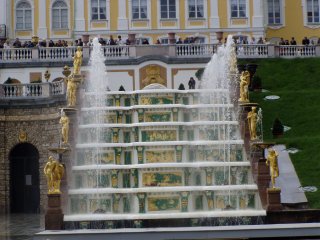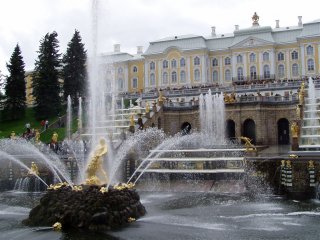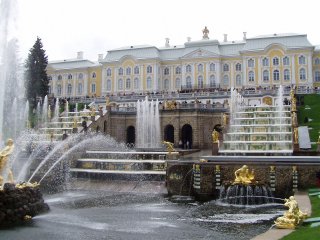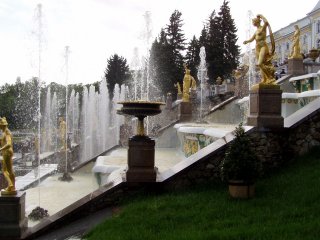During the Cold War
The beginning of the
Cold War led to the construction of a deep part of the
Arbatsko-Pokrovskaya Line. The stations on this line are very deep and were planned as shelters in the event of nuclear war. After finishing the line in 1953, the upper tracks between
Ploshchad Revolyutsii and
Kiyevskaya were closed and later reopened in 1958 as a part of the
Filyovskaya Line. In the further development of the Metro, the term "stages" was not used any more, although sometimes the stations opened in 1957–1959 are referred to as the "fifth stage".
During the late 1950s, the architectural extravagance of new metro stations was significantly toned down, and decorations at some stations, like
VDNKh and
Alexeyevskaya, were greatly simplified compared with original plans. This was done on the orders of
Nikita Khrushchev, who favoured a more spartan decoration scheme. A typical layout (which quickly became known as "Sorokonozhka" - "Centipede", which comes from the fact that early designs had 40 concrete columns in two rows) was developed for all new stations, and the stations were built to look almost identical, differing from each other only in colours of the marble and ceramic tiles. Most of these stations were built with simplified, cheaper technologies which were not always quite suitable and resulted in extremely utilitarian design. For example, walls paved with cheap and simplistic ceramic tiles proved to be susceptible to vibrations caused by trains, with some tiles eventually falling off. It was not always possible to replace the missing tiles with the ones of the same color, which eventually led to infamous "variegated" parts of the paving. Not until the mid-1970s the architectural extravagance was restored, and original designs once again became popular. However, newer design of "centipede" stations, with 26 columns with wider ranges between them and more sophisticated, continued to dominate.
































 so luxurious
so luxurious